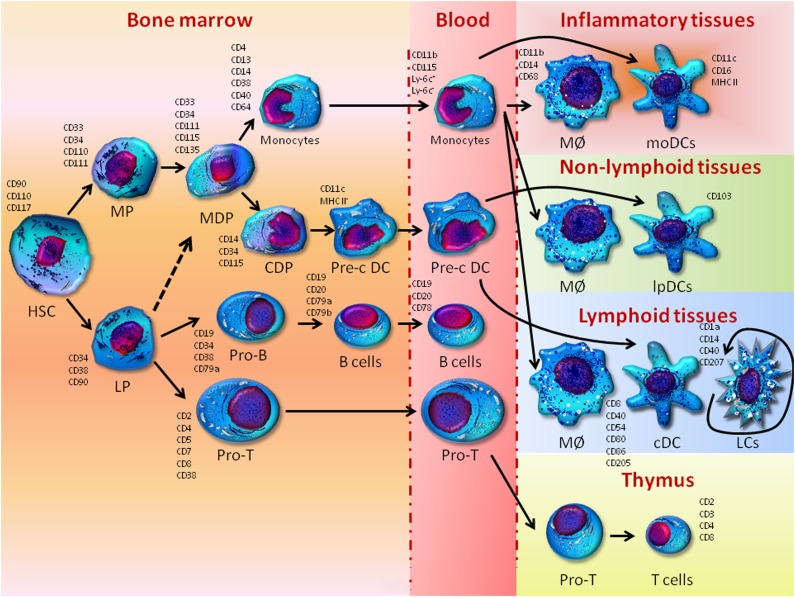Figure 1.
Development of monocytes, macrophages, and dendritic cells. In the bone marrow, hematopoietic stem cells produce myeloid and lymphoid precursors. Myeloid precursors give rise to monocytes/macrophages and dendritic cell (DC) progenitors that in turn generate monocytes and common DC precursors. DC precursors give rise to preclassical dendritic cells that circulate in the blood and enter lymphoid tissues as classical dendritic cells and nonlymphoid tissues as mucosal DCs in the lamina propria. Epidermal Langerhans cells replicate in situ and are independent from the bone marrow because they derive from an embryonic precursor invading the epidermis before birth and subsequently proliferate in situ to create a pool of Langerhans cells. Monocytes derived from monocytes/macrophages and dendritic cell progenitors give rise to macrophages, both in a steady state and during infection, and inflammatory monocyte-derived DCs. A contribution of lymphoid precursors to DC development cannot be excluded in view of their intrinsic myeloid potential (dashed line).
Abbreviations: cDC, classical dendritic cell; CDP, common dendritic cell precursor; DCP, dendritic cell precursor; HSC, hematopoietic stem cell; LCs, Langerhans cells; LP, lymphoid precursor; lpDCs, dendritic cells in the lamina propria; MØ, macrophage; MDP, monocytes/macrophages and dendritic cell progenitors; moDCs, monocyte-derived dendritic cells; MP, myeloid precursor; Pre-c DC, preclassical dendritic cell.

